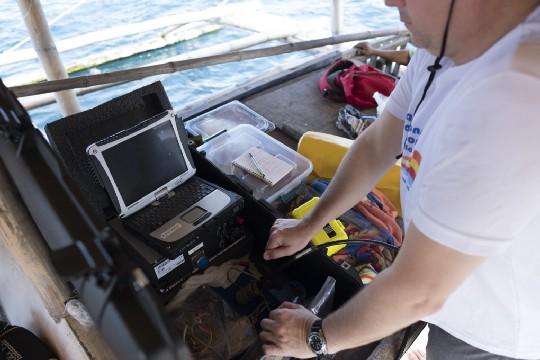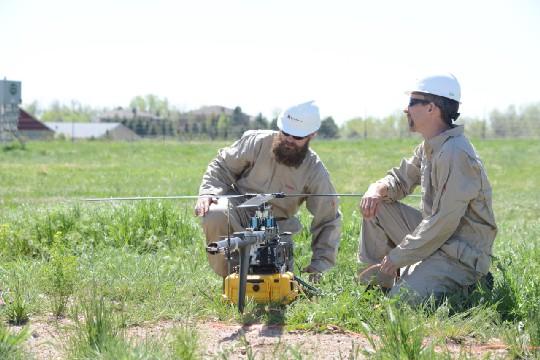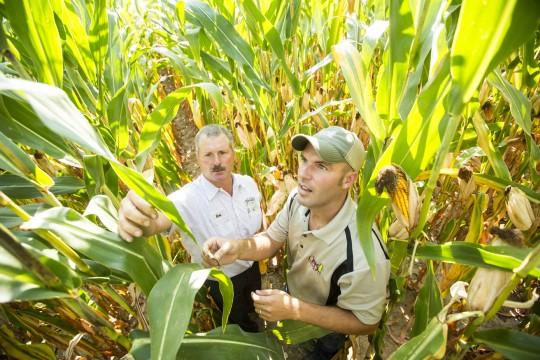How Technology Is Leading Us to New Climate Change Solutions
Originally published by The Fourth Wave of Environmental Innovation on Medium
A fresh wave of technological innovation is deepening our understanding of tough environmental challenges — and also giving us new ways to solve them. As thousands of business leaders and policymakers gather in San Francisco this month for the Global Climate Action Summit, these game-changing innovations will be showing up all over town.
One example will be new approaches to measuring and reducing emissions of methane, a potent greenhouse gas that has pound for pound more than 80 times the near-term warming power of carbon dioxide. Human-made methane emissions are responsible for a quarter of all the warming we’re experiencing today.
That’s a problem, but it’s also an enormous opportunity. One of the largest sources of methane is the oil and gas industry. Indeed, natural gas is mostly methane. And it turns out that reducing these industrial methane emissions is the fastest, most cost effective way to slow the rate of warming, even as we continue working hard to decarbonize our energy system. But we didn’t know that until recently — or at least we couldn’t prove it — because nobody knew how much methane was coming from the oil and gas sector.
Data Reveals Problem, OpportunityFive years ago, Environmental Defense Fund (EDF) set out to measure methane emissions from the U.S. oil and gas sector, launching an unprecedented scientific research effort involving more than 140 researchers from 40 institutions, along with four dozen oil and gas companies that provided site access and technical advice. Researchers used a range of technologies — including sensors mounted on drones, airplanes, and even Google Street View cars — to measure emissions at every link in the supply chain, from remote wellheads to pipes under your local street.
Results were published in over 30 peer-reviewed scientific journal articles. A synthesis paper published this summer in Science concluded that the U.S. oil and gas industry emits 13 million metric tons of methane each year—nearly 60 percent more than current Environmental Protection Agency estimates. But these emissions can be controlled, often through simple maintenance.
Data from the project has been instrumental in convincing both industry leaders and policymakers that they have a serious methane challenge. The findings helped shape new regulations in states such as Colorado, Wyoming, California, and Pennsylvania, and national-level policies to reduce emission from oil and gas production on federal and tribal land.
Now, we’re using the data to hold the line against misguided attempts by the current administration to roll back those standards.
Driving a Global Emissions GoalWorldwide, the International Energy Agency (IEA) reckons that oil and gas methane emissions are about 75 million metric tons – enough to generate all of Africa’s electricity twice over. The IEA estimates that industry could reduce those emissions 75 percent using existing technologies (two thirds of that at no net cost).
We at EDF are calling for a 45 percent reduction in global oil and gas methane emissions by 2025. That would have the same 20-year climate benefit as closing one-third of the world's coal plants. Results on such a scale are conceivable thanks to growing digitization in the industry. For example, reliable, low-cost sensors, remote monitoring and oilfield internet-of-things can help energy companies reduce emissions (and eliminate waste of saleable gas at the same time).
To help realize these prospects, EDF is working with Shell and Equinor (formerly Statoil) to test continuous monitoring technologies developed by entrepreneurs who took part in our Mobile Monitoring Challenge. We’ve also partnered with Stanford University and ExxonMobil to look at mobile detection technologies using aircraft and drones.
Data-driven transparency is sparking competition within the industry itself. In April, BP set its first quantitative methane target. Last month ExxonMobil committed to cut emissions and flared gas volumes. Shell, Qatar Petroleum and other producers have also committed to reduce methane emissions across the natural gas supply chain.
Heading into SpaceNow we’re pushing the technological envelope even farther, by developing MethaneSAT – a satellite mission due to launch in 2021, and designed to continuously map and measure methane emissions with exacting precision almost anywhere on the planet. MethaneSAT will make it possible to ‘see’ emissions in places where they’re difficult to track today.
Data from MethaneSAT will be available for free to anyone. It will help countries, companies and citizens spot problems, identify reduction opportunities, and measure progress over time. It’s just one of several space-based methane monitoring tools now in the works. The European Space Agency, for example, launched its TROPOMI satellite in 2017. A private company called GHGSAT has one satellite in orbit and another due to launch within the year.
See EDF president Fred Krupp's TED Talk on MethaneSat
Some have likened this to a new space race. But I see it as a wave of transformational change emerging from multiple nodes across an innovation ecosystem. Each has different, but complimentary, capabilities, together offering multiple streams of data to paint an unassailable picture of the problem.
Just as we have used the U.S. methane data to spur new policies and better business practices, we will use data from MethaneSAT and our allies to help reach our 45% reduction goal by 2025, and our aim to virtually eliminate the industry’s methane emissions by 2050.
Sensors, Sensors EverywhereWe’re deploying advanced sensor technologies to help create a healthier environment in other ways, too – from Google cars mapping air pollution and its health effects to wearable bracelets that track your daily chemical exposure.
Elsewhere, retailers and consumer brands are using blockchain to improve accountability and sustainability across far-flung supply chains. Sensors can help farmers reduce the amount of chemicals on their fields, and “smart boats” can help fishermen manage their catch effectively, increasing profits and fish in the sea.
It’s no coincidence the Global Climate Action Climate Summit is happening in California, the heart of America’s most innovative sector and the state that has led the nation in environmental stewardship. California has proven time and again that a strong economy and a healthy environment go hand in hand. Now more than ever, technology is the key to making this a worldwide success story.
Originally published by The Fourth Wave of Environmental Innovation on Medium.





